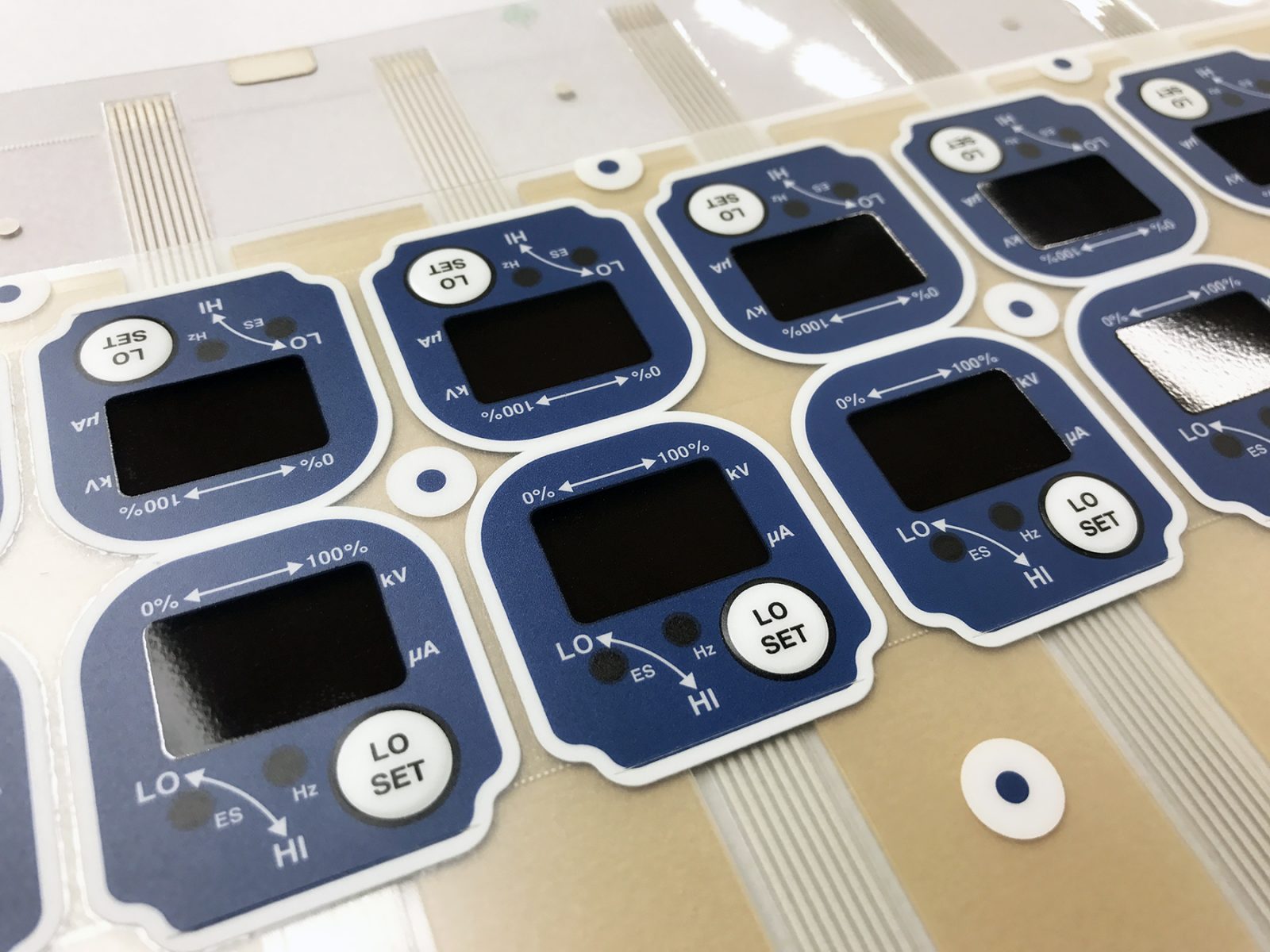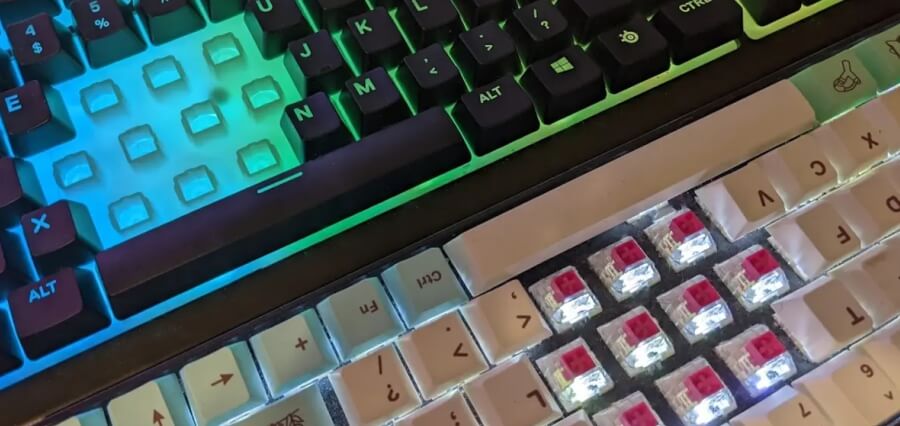Secret Benefits of Using a Membrane Switch in Industrial Applications
Secret Benefits of Using a Membrane Switch in Industrial Applications
Blog Article
Understanding the Functionality of Membrane Layer Switches for Interface Gadget
The performance of membrane layer switches over represents a considerable innovation in individual interface design, incorporating performance with aesthetic flexibility. These buttons operate through a multi-layered structure that equates individual communications into electric signals, enabling both small designs and strength against environmental variables. As markets increasingly prioritize customer experience, understanding the subtleties of membrane layer button innovation comes to be important. What implications do these developments hold for future applications, and exactly how might they redefine user interactions across numerous tools?
What Are Membrane Switches?
Membrane layer buttons are ingenious interface devices that assist in individual communication with digital tools. These flexible components include several layers, consisting of a visuals overlay, spacer, and a published circuit layer. The design enables for a smooth combination right into numerous electronic tools, improving both the aesthetic and practical facets of interface.
Membrane layer switches are typically used in a vast array of applications, from house appliances to industrial machinery and medical devices. Their building typically features a thin account, making them an optimal option for small layouts. The responsive comments supplied by these buttons can be crafted to meet certain individual preferences, ensuring effective interaction in between the individual and the gadget.
Sturdiness is one more substantial advantage of membrane layer switches, as they are immune to dirt, dampness, and chemicals, which improves their lifespan in requiring settings. In addition, these buttons can be tailored in terms of form, dimension, and graphic design, permitting for branding and user-specific functions. In general, membrane layer switches over stand for a functional solution for enhancing individual experience in digital tools, combining functionality with aesthetic allure in an effective fashion.
Just How Membrane Switches Over Job
Operating on a simple principle, membrane layer switches over use a split building to register customer input effectively. Each button includes several layers, including a printed circuit layer, a spacer layer, and a top visuals layer, which are created to work together seamlessly. When a user presses the top layer, it presses the spacer layer, bringing the conductive elements of the circuit layer right into call with each other.
This get in touch with develops a shut circuit, signifying the gadget to carry out a details function. The style enables different arrangements, including tactile comments, which can enhance the individual experience by giving a physical experience upon activation. The products utilized in membrane layer buttons commonly include flexible substratums, such as polyester or polycarbonate, which ensure durability and resilience versus wear and tear.

Trick Advantages of Membrane Layer Buttons

Another significant benefit is their density. Membrane layer buttons are thin and lightweight, which makes it possible for makers to save space in their gadgets without sacrificing functionality. This feature is particularly helpful in applications where weight and volume are critical considerations.
Additionally, membrane switches are immune to dust, moisture, and chemicals, improving their longevity. This resilience expands their life-span and lowers the need for frequent substitutes, causing price financial savings with time.
In addition, the responsive feedback provided by membrane layer buttons can be optimized to boost customer communication. They can include features such as raised buttons or audible clicks, enhancing usability and individual experience.
Applications Throughout Industries
User user interface tools utilizing membrane switches prevail in a wide array of sectors, showcasing their versatility and functionality. Membrane Switch. In the clinical sector, membrane switches are essential to tools such as analysis devices and individual tracking systems, where their toughness and convenience of cleaning are important for keeping hygiene requirements. In the automobile market, these buttons are employed in dashboard controls and infotainment systems, offering a sleek and modern-day user interface for users.
Additionally, the consumer electronics industry benefits from membrane layer buttons in home appliances and handheld gadgets, where compact layout and straightforward user interfaces enhance user experience. Industrial applications additionally leverage membrane layer switches for control my review here panels in equipment and automation systems, emphasizing their toughness and resistance to rough atmospheres.
In the aerospace and defense markets, membrane buttons are utilized in cabin controls and tools, where dependability and performance under extreme conditions are paramount. In addition, the gaming industry increasingly integrates membrane switches in controllers and game devices, adding to an appealing individual experience. On the whole, the flexibility of membrane switches enables their widespread usage throughout numerous industries, emphasizing their significance in modern individual interface style.
Future Patterns in Membrane Layer Switch Over Technology

Additionally, using sophisticated products, such as polycarbonate and polyester films, is expected to rise, providing enhanced longevity and resistance to ecological stress factors. These products add to the overall long life of membrane switches, making them suitable for harsher industrial applications.
Moreover, the incorporation of wise innovation, consisting of IoT connectivity, will enable membrane switches to communicate with various other gadgets and systems, assisting in a more interactive user experience. This pattern straightens with the expanding need for smart tools across various markets, from healthcare to customer electronic devices.
Finally, customization alternatives are anticipated to broaden, enabling suppliers to create bespoke remedies customized to specific individual needs and preferences. These developments will position membrane buttons as vital elements in the advancement of interface technology.
Conclusion
In conclusion, membrane layer switches over stand for a crucial innovation in individual interface modern technology, providing a dependable and flexible solution for varied digital applications. Their layered construction facilitates small layout, while features such as tactile feedback improve individual interaction. The resilience against environmental aspects further strengthens their utility throughout multiple markets. As advancements in product scientific research and touch picking up innovations continue, the functionality and applicability of membrane buttons are expected to broaden, reinforcing their value in modern electronic gadgets.
Report this page